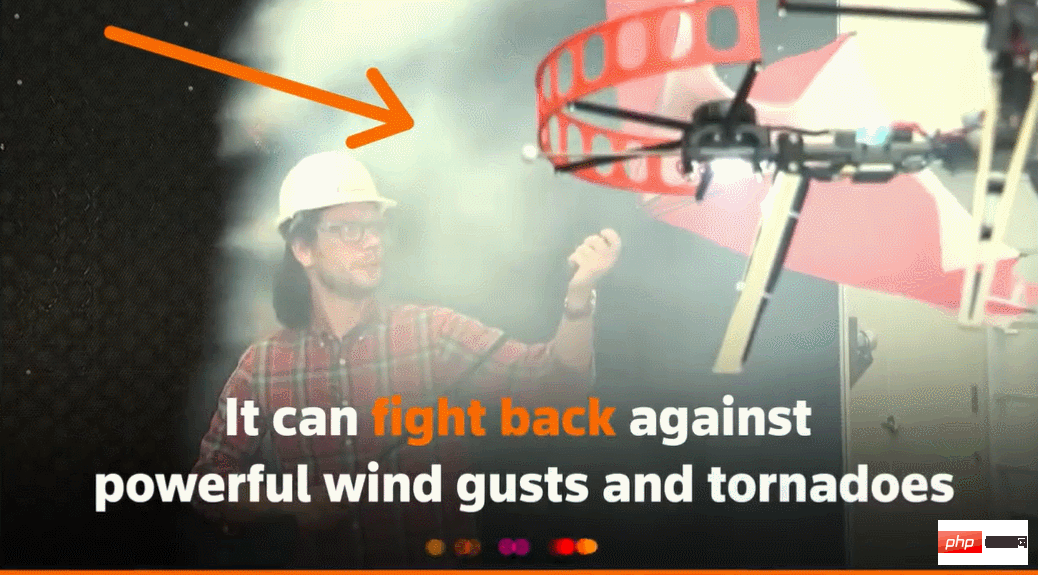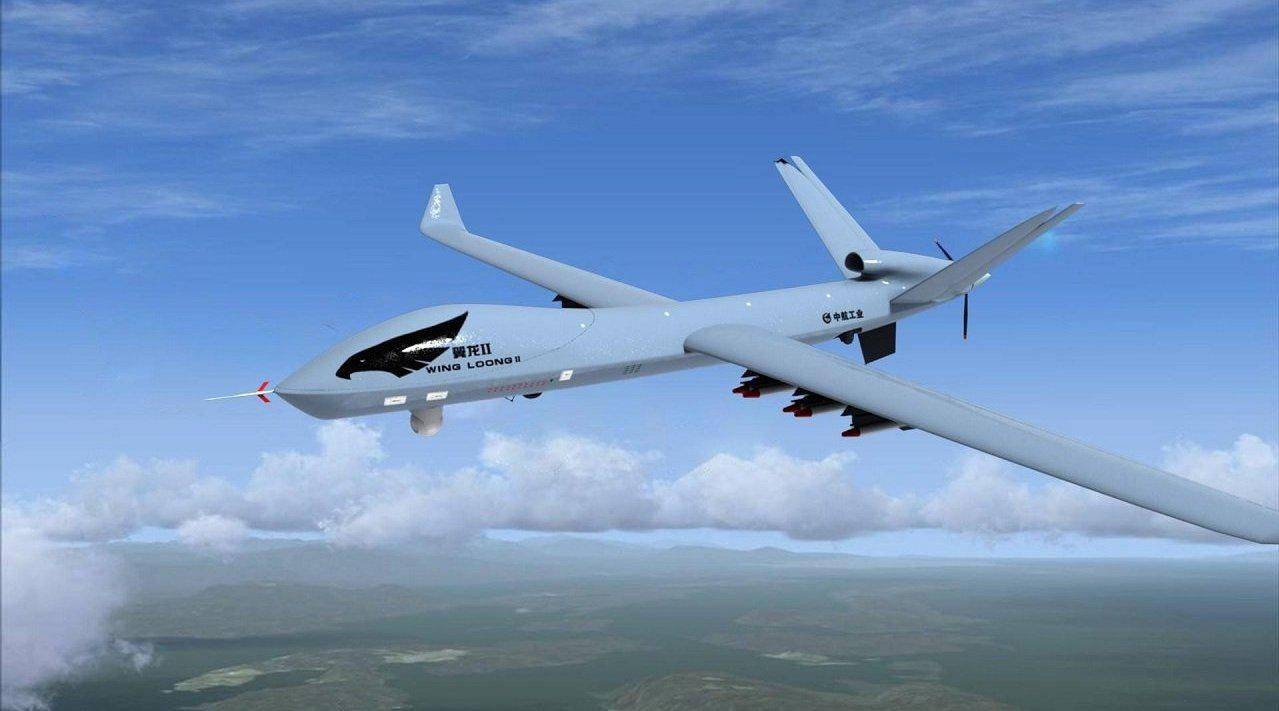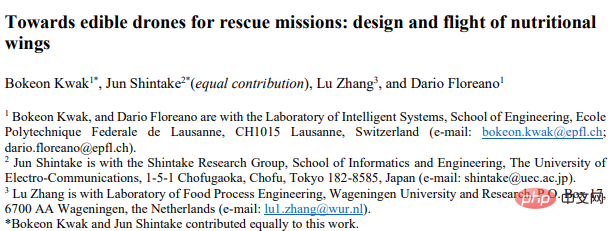Abstract:Swarming is a disruptive, game-changing technology that involves the coordinated deployment of multiple unmanned systems in multiple domains (land, sea, air, space) . Developments in new microelectronics, guidance, navigation, sensors and artificial intelligence technologies enable low-cost micro-drones to perform challenging missions. When combined with novel decision-making processes, target tracking, communications technologies and algorithms, swarms can have a huge impact on the battlefield. It can also be used to provide continuous and undetectable surveillance capabilities as well as critical defense capabilities, such as intercepting cruise missiles. This article describes European research activities in the field of swarming and delves into the significant implications it may have for defence.
Keywords: UAV, autonomous capabilities, target tracking, guidance and control, sensor fusion

1. Overview
Drone swarms are composed of a variety of different unmanned equipment. They have the capabilities of decision-making, target tracking, guidance and control, sensor fusion and command, and can operate as a group of intelligent autonomous "systems". Each capability in the swarm system can also operate independently as an independent intelligent autonomous system
Design unmanned vehicles with the necessary intelligence and autonomy by leveraging developments in unmanned devices, artificial intelligence (AI), communications, guidance and control, sensor fusion, aerospace and unmanned traffic management (UTM) These drones can fly in a coordinated manner like a swarm of bees or a flock of birds. Such drone swarms could bring game-changing capabilities to defense companies that combine digital and smart technologies. Drone swarms can also help Europe enhance security capabilities and have a disruptive impact on other areas such as urban transportation, unmanned traffic management, autonomous driving and unmanned equipment
In terms of national defense, the use of drones can significantly reduce the risk of combatants being exposed to dangerous environments. Drones are capable of performing boring and laborious tasks such as continuous monitoring of large areas (e.g. the Mediterranean Sea, European borders). In future military scenarios, drones can also be used to confuse and overwhelm opponents. Figure 1 illustrates the multi-domain drone swarm concept for the protection and surveillance of high-value assets such as military camps or installations, developed in 2016 under the European Defense Agency pilot project "European Swarm" (EUROSWARM) first proposed.
 Figure 1: Multi-domain drone swarm concept
Figure 1: Multi-domain drone swarm concept
2. Bee colony technology
A drone swarm consists of a group of autonomous or semi-autonomous drones. The drones in the swarm can cooperate with each other to achieve a common goal. Drone swarms can be used for a variety of military missions such as reconnaissance, surveillance and strike operations. When it comes to drone swarm design, military applications must consider the following four main technology modules. From sensing capabilities to swarm communication protocols and routing, each module is important to drone swarm performance and stability.
1. Perception capability: Perception capability is crucial for drone swarms. This capability enables the swarm to sense and understand its environment, detect obstacles, identify targets, and maintain situational awareness. Effective sensing capabilities enable bee colonies to work in complex dynamic environments and perform various complex tasks efficiently. Machine learning and artificial intelligence technologies can enhance perception capabilities. Swarms can achieve unprecedented situational awareness through sensor fusion.
2. Task allocation and decision-making: Task allocation and independent decision-making are crucial to drone swarms. Efficient tasking ensures that each drone is assigned a mission that matches its capabilities, optimizing the use of available resources. If one or more drones fail, the swarm can automatically fill the gap, and task allocation helps the rapid dissemination of decisions, allowing the swarm to quickly adapt to changing environments. Task distribution also helps improve adaptability, scalability, and speeds up decision-making, making swarms more effective in dynamic and uncertain environments. Through seamless data exchange between drones within the swarm, the swarm is able to make better decisions, which improves efficient resource utilization, stability, fault tolerance, adaptability and scalability.
3. Path planning and collision avoidance: Drone swarms usually consist of a large number of drones. In order to achieve efficient and safe operation of drone swarms, path planning and collision avoidance methods are crucial. The core of swarm path planning is to find the best path for each drone to reach its destination while avoiding obstacles and minimizing the time and energy required. Collision avoidance ensures that drones will not collide, allowing each drone to successfully complete its mission. For example, in surveillance missions, path planning can optimize the drone's route of action to minimize overlapping areas and increase coverage. Currently, there are a variety of techniques to achieve path planning and collision avoidance, including centralized methods and decentralized methods. The centralized approach involves the planning of individual drones and the coordination of the paths of all drones in the swarm. The decentralized approach involves each drone making its own path planning decisions based on local information.
4. Communication: A swarm operates optimally when communication between drones within the swarm remains open and without delays. Through sensor fusion, swarms can provide high-determinism and high-resolution information. Effective communication protocols enable drones to share information such as location, status, and task assignments, while routing is responsible for finding the best path for information dissemination between drones. This enables swarms to work together, coordinate actions, and share information in real time. Currently, there are various technologies that can implement communication protocols and routing, such as ad hoc network technology, mesh network technology, and multi-hop routing technology. Ad hoc networks enable drones to communicate directly with each other without the need for fixed infrastructure. Mesh networks, on the other hand, use drones to form a network with redundant paths for communication. Multi-hop routing can realize relay transmission of information between drones, thereby achieving longer-distance communication.
The communication protocol of UAV swarms can be adjusted according to mission requirements and swarm characteristics to achieve information exchange. Currently, there are three main architectural approaches to designing military drone swarms, which include:
1. Centralized architecture: In this approach, the operations of all drones within the swarm are coordinated by a central control entity, such as a ground control station. The central control entity is able to communicate with the swarm and collect data, process the data, and make decisions. This method is suitable for small colonies and simple tasks.
2. Decentralized architecture: In this approach, there is no central control entity, and each drone in the swarm is able to operate independently, make decisions based on local information, and interact with Other drones carry out information communication. This approach is suitable for large-scale swarming missions and other highly complex tasks.
3. Hybrid architecture: This approach combines the advantages of centralized and decentralized architectures. In this approach, there is a central control entity that provides high-level navigation to the drones, while each drone is equipped with autonomous decision-making capabilities.
Drone swarms have a wide range of applications in the military field and can perform a variety of tasks. The following are key examples of some types of autonomous swarm operations:
1. Area coverage: In area coverage operations, the swarm’s task is to scan a specific area using sensors equipped with drones. In most cases, the ideal area coverage is 100% and the drone must completely scan the area. Covering an area with multiple drones can encounter some problems, and common ways to deal with these problems include using decomposition techniques to divide the focus area into a set of sub-areas and deploying a drone in each sub-area. For swarms containing different types of drones, the range of the sensor, the maneuverability of the drones, and the range must be considered during the area decomposition process to improve the efficiency of the system. After each drone is assigned a sub-area, these drones need to independently plan their paths within their respective areas. Coverage path planning methods include 2D, 3D and multi-UAV area coverage.
2. Comprehensive and sustained area coverage: Comprehensive and sustained area coverage requires the deployment of drone swarms and their ability to provide sensor coverage throughout a given area throughout the mission. The drones within the swarm should form a formation based on the location of their sensors and possible environmental features such as obstacles or occlusion areas. UAVs within the swarm are deployed statically or dynamically as regional characteristics or monitoring areas evolve over time. The main purpose is to design a formation pattern that achieves full static coverage with a minimum number of drones.
3. Area search: In area search operations, the task of the drone swarm is usually to search for specific targets in key areas. In this operation, complete coverage of the area is not required. The swarm must identify targets in the area in the shortest amount of time. The drones in the swarm must cooperate throughout the mission, and they will use online decision-making and path planning techniques to improve the performance of the system based on their own perception of the environment and the behavior of other drones. A swarm area search algorithm can be used to predict the probability of a target distribution. Bionic swarm algorithms have also attracted scientific interest in area search operations.
4. Area surveillance: The area surveillance operation requires the swarm to continuously monitor a specific area. Area surveillance is typically used for patrolling, surveillance, detection of emergent or dynamic threats, and border security. This action is intended to minimize the time between two long monitoring periods.
5. Target tracking: Ordinary target tracking operations involve a target and a drone. The drone's tracking range is based on online path planning based on its sensor data and an estimate of the target's location, and in some cases the target's predicted behavior or future location. The drone must navigate on its own so that it always follows its target. With the introduction of swarm capabilities, target tracking tasks can be completed by multiple drones that can track single or multiple targets.
The design of military drone swarms requires comprehensive consideration of multiple factors, including mission requirements, swarm size, communication capabilities and computing resources
3. Bee colony project application
1. Low observability unmanned aerial vehicle system - "LOTUS"
The "Lotus" project is a European Defense Industrial Development Program (EDIDP) project consisting of 9 companies from Greece and Cyprus and another 2 companies from Spain and the Netherlands. The project, led by lntracom Defense, was launched in December 2020 and will last for 45 months. The Lotus project team has designed an advanced unmanned aerial system for tactical aerial reconnaissance and surveillance missions. The UAV possesses several key features, including stealth capabilities, stand-off combat capability, airworthiness, interoperability based on NATO standards, and reliable communications taking into account network security. In addition, the system extensively uses artificial intelligence technology to ensure that it can accurately perform complex tasks. The UAV mothership designed by the project team is equipped with multiple infrared sensors, has low observability and long endurance, and is also equipped with a self-defense system to deal with enemy threats. The UAV carrier can deploy four tube-launched folding-wing UAVs with advanced autonomous capabilities and the ability to perform complex ISR missions. The drone mothership and drones together form a powerful drone swarm, which can achieve delay-free collaboration and provide critical intelligence and monitoring data to on-site decision-makers. In Figure 2, intelligence tasking (left) and collaborative coverage (right) of ground targets are performed via a swarm algorithm developed at the University of Patras.
 Figure 2: Example of drone swarm action in the "Lotus" project
Figure 2: Example of drone swarm action in the "Lotus" project
2. Autonomous, reconfigurable drone swarms for defense applications - "ACHILLES". Rewritten content: ACHILLES is an autonomous, reconfigurable drone swarm for defense applications
The "Achilles" project is a European Defense Agency project, a collaboration between Greek and German companies and universities. The project was launched in January 2023 and is led by the University of Patras. Companies and schools participating in the project include ATOS, DroniQ, Scytalvs, Intracom Defense, University of Patras, Ingolstadt University of Applied Sciences and the University of Athens. This project aims to promote the development and use of drone swarms in the defense sector by increasing the TRL of autonomous, reconfigurable drone swarms for specific defense missions, and to demonstrate drone swarms for continuous surveillance capabilities and combat readiness levels. The project team discovered a variety of advantages and potential applications of drone swarms, and used this as inspiration to promote the Achilles project. Recent technological advances enable drones to automatically acquire critical data to enhance situational awareness. Scalable autonomous and reconfigurable drone swarms have highly effective regional coordination capabilities and strong adaptability to various events. Outcomes and innovations from the project are expected to include new drone swarming capabilities and methods to enable the safe and effective integration of drones into military and civilian airspace. These capabilities will support the maturation and validation of drone swarm-based systems and technologies.
3. Manned-unmanned system escort operations - "COMMANDS" project Rewritten content: 3. Manned-unmanned system escort operations - "COMMANDS"
The "Command" project is a European Defense Fund (EDF) project involving 21 companies from 10 countries. Launched in December 2022, the three-year project is led by Sener Aerospace and is supported by the defense ministries of seven countries. The ministries of defense of these countries also provide the project with basic requirements for project development. The goal of the project is to develop agile, intelligent and collaborative manned and unmanned system life cycle capabilities (TLC). The project will include several modular systems that enable swarming capabilities through seamless functional services and data exchange. The system will consist of manned and unmanned ground vehicles and drones. To reduce project risks, the project uses a variety of technologies to develop a self-sustainable EU Defense TLC sustainability roadmap. Ultimately, the project will upgrade existing ground vehicles and be integrated into future vehicles. The project plans to validate the technology through technology demonstrators, which will be conducted in laboratories and mobile demonstrators in real-life scenarios, with a focus on providing armed escorts for convoys performing "last mile" resupply
4. Impact
Swarm technology enables large numbers of drones to be highly interconnected, effectively plan and assign mission objectives, make coordinated tactical decisions, and collaboratively respond to dynamic environments with minimal supervision while making recommendations to operators. As swarm technology matures, its applications in the military field are also developing. Many believe that the development of swarms can be compared to the development of precision weaponry. Precision-equipped weapons were tested and refined in the 1970s and 1980s, but did not emerge until the first Gulf War in the early 1990s. The use of swarms could render obsolete manned defense systems currently used for low- and medium-altitude surveillance and strike missions. In the coming decades, remotely operated single unmanned equipment such as drones will become obsolete as unmanned aerial systems in the air, on the ground and at sea will be able to deploy multiple drones to fight in swarms, This expands the combat range and surveillance range, and improves the UAV's ISTAR capabilities and attack capabilities for performing various missions.

5. Summary
NATO’s multinational defense ministries have announced their intention to integrate swarm technology with existing weapon systems, such as F-35 fighter jets, British Storm next-generation fighter jets, and FCAS aircraft/unmanned aerial systems. It’s clear that swarm technology is being integrated with military capabilities around the world and starting to impact countries’ defense capabilities. Swarms are a key military technology that will directly facilitate the development of multiple technological fields. For example, this technology can optimize the artificial intelligence technology of embedded swarms and autonomous systems, effectively improving the safety, efficiency and effectiveness of collaborative operations of defense systems operating in unstructured, rapidly changing, restricted and confrontational environments. As seen in the Russia-Ukraine war and conflicts in the Middle East, swarm technology is changing warfare through the use of swarms of drones and loitering munitions. The development of autonomous swarm systems is therefore vital to Europe’s defence, security and prosperity.
The above is the detailed content of Drone swarms: A game-changing technology for defense applications. For more information, please follow other related articles on the PHP Chinese website!
 扛住强风的无人机?加州理工用12分钟飞行数据教会无人机御风飞行Apr 09, 2023 pm 11:51 PM
扛住强风的无人机?加州理工用12分钟飞行数据教会无人机御风飞行Apr 09, 2023 pm 11:51 PM当风大到可以把伞吹坏的程度,无人机却稳稳当当,就像这样:御风飞行是空中飞行的一部分,从大的层面来讲,当飞行员驾驶飞机着陆时,风速可能会给他们带来挑战;从小的层面来讲,阵风也会影响无人机的飞行。目前来看,无人机要么在受控条件下飞行,无风;要么由人类使用遥控器操作。无人机被研究者控制在开阔的天空中编队飞行,但这些飞行通常是在理想的条件和环境下进行的。然而,要想让无人机自主执行必要但日常的任务,例如运送包裹,无人机必须能够实时适应风况。为了让无人机在风中飞行时具有更好的机动性,来自加州理工学院的一组工
 张家界网红老鹰再抓无人机!景区:已发禁飞通告May 31, 2023 pm 01:22 PM
张家界网红老鹰再抓无人机!景区:已发禁飞通告May 31, 2023 pm 01:22 PM5月10日上午,一条景区“老鹰”正面攻击无人机的视频被广泛转发。当时操作无人机的飞手张雪介绍,她是桑植县融媒体中心的记者,当天接到去张家界九天峰恋景区拍摄宣传片镜头的任务。“大概是早上8点,我们去拍摄九天峰恋景区的宣传视频,刚起飞没多久,正在拍摄,我看见它迎面飞来,我还很兴奋跟同事说我拍到鸟了,刚说完无人机就被抓走了,有被吓到。”张雪介绍,当时起飞后都很顺利,拍摄了不到2分钟的时间,就看见一只很大的鸟急速飞向无人机。“从它正面出现在画面中,再到抓住无人机带离,最多就30秒钟的时间。”专家对无人机
 牡丹江首次举行大型无人机表演Jun 04, 2023 am 10:58 AM
牡丹江首次举行大型无人机表演Jun 04, 2023 am 10:58 AM6月2日晚,由牡丹江市委宣传部、牡丹江市生态环境局、牡丹江市融媒体中心共同主办,牡丹江市天空传媒有限公司承办的“我和我的牡丹江·智慧点亮天空暨6.5世界环境日宣传系列活动”大型无人机表演震撼登场,600架无人机缓缓升空,拼出一幅幅绚丽的图景。6.5世界环境日、小山小水吉祥物、八女投江烈士群雕、杨子荣人物形象、镜泊湖胜景、人民公安、中国雪乡……6月2日晚7时30分,在牡丹广场上,无人机表演拉开帷幕,起落交错的队形、魔幻的灯光,由无人机编队组成的图案、字样在夜空中依次呈现,无人机编队每变换一个新的场
 无人机技术的最新发展Apr 09, 2023 pm 05:11 PM
无人机技术的最新发展Apr 09, 2023 pm 05:11 PM把我们带到无人机领域的技术发展并没有就此停止。它不断扩展,直到无人机不仅仅用于军事目的。最新的发展表明,无人机向所有类型的行业扩张的步伐并没有停止。一些主要的无人机技术发展包括以下几点。着陆功能最新的无人机具有更好的着陆功能。提供更多的摄像头访问权限和更好的摄像功能,并允许用户更好地判断着陆的位置。这对于军事目的来说是一个很好的特性。除此之外,这一功能可以让无人机的腿均匀、迅速地展开,而不会被卡住可能损坏它的物体。快速着陆也使无人机的工作效率更高,表明用户对设备有更好的控制。此外,更好的着陆功能
 丰翼无人机2023上半年度新品发布会,多款新机型重磅亮相!Jun 07, 2023 pm 02:19 PM
丰翼无人机2023上半年度新品发布会,多款新机型重磅亮相!Jun 07, 2023 pm 02:19 PM2023年上半年度,丰翼科技陆续在四月、五月发布两款新产品机型—丰舟90和方舟150无人机,已完成预售签约数十台,客户分布在物流、外贸、医疗、工程、消防、电力等诸多领域。而在2023第七届世界无人机大会·无人机物流配送应用论坛暨丰翼科技新产品发布活动现场,对于丰翼的新产品与服务解决方案,多家企业也对此表现出了浓厚的兴趣。随着无人机产业的发展,无人机在各个行业、各个领域的应用都在不断深化,目前无人机的应用场景已经达到了200多个。物流市场也成为了无人机应用的重要增长极。为了让社会各界了解无人机物流
 美军AI无人机“误杀”操作员,人工智能要在军事领域毁灭人类?Jun 11, 2023 am 10:40 AM
美军AI无人机“误杀”操作员,人工智能要在军事领域毁灭人类?Jun 11, 2023 am 10:40 AM众所周知,人工智能在现代社会中开始占据越来越重要的作用,现在无论是在工业生产还是民生建设当中都能频繁看到人工智能的身影,这引起了大量的专业人士的担忧,前些时候,三家全球顶尖的AI公司负责人与美国总统拜登展开了一场特殊的会谈,力求寻找到未来该如何监管人工智能,并且还告诫美国政府,如果不限制人工智能的火速发展,将会给人类社会带来无比可怕的动荡。也有很多人对于这样的说法不屑一顾,他们认为既然人类能够创造人工智能,就能够很好地控制人工智能,而且未来的发展也离不开人工智能,所以人工智能毁灭人类的说法只是在
 朝鲜出现国产大型察打一体无人机,实力世界第二,太意外了Jun 28, 2023 pm 01:34 PM
朝鲜出现国产大型察打一体无人机,实力世界第二,太意外了Jun 28, 2023 pm 01:34 PM西方的商业卫星在朝鲜平壤附近的某机场发现了一架翼展高达35米的大型无人机,不久又在这个机场出现了一架翼展达到20米,看上去很像察打一体的无人机,美国人说这就是朝鲜半岛的大型察打一体无人机。要是按照这些卫星图片来看,假设说这些图片是真实的话,那后来发现的这架无人机翼展达到了20米,大约是我们翼龙2或者是美国MQ9的水平,发现的第一架翼展达到35米,那就和美国的R-Q4全球鹰那种战略侦察无人机是同一个水平了。根据现在这种情况,有无分析认为,翼展长达35米的无人机,目前也只有中美才有设计指导的能力,而
 合法但有病?能吃的无人机,直接作为食物投送给被困人员Apr 12, 2023 pm 10:43 PM
合法但有病?能吃的无人机,直接作为食物投送给被困人员Apr 12, 2023 pm 10:43 PM这个无人机能吃!在解救被困人员的时候,无人机可以用来运输粮食和水。只不过,小型无人机一般载荷都不大,大多数运载无人机只能承载其质量的30%作为有效载荷,其余大部分质量都是属于机身,比如机翼。上周在京都召开的 IEEE/RSJ 智能机器人与系统国际会议(IROS)上,瑞士洛桑联邦技术研究所(EPFL)的研究人员提交了一篇论文,研发了一种无人机,可以有效解决这个问题。这个是怎么做到的呢?很简单,用可以吃的食物做无人机的机翼,这下可以将食物的有效载荷从质量的30%提高到50%。我们一起来看看这个能吃的


Hot AI Tools

Undresser.AI Undress
AI-powered app for creating realistic nude photos

AI Clothes Remover
Online AI tool for removing clothes from photos.

Undress AI Tool
Undress images for free

Clothoff.io
AI clothes remover

AI Hentai Generator
Generate AI Hentai for free.

Hot Article

Hot Tools

Zend Studio 13.0.1
Powerful PHP integrated development environment

SublimeText3 English version
Recommended: Win version, supports code prompts!

Dreamweaver Mac version
Visual web development tools

ZendStudio 13.5.1 Mac
Powerful PHP integrated development environment

Dreamweaver CS6
Visual web development tools






